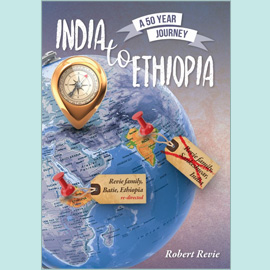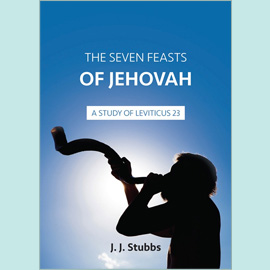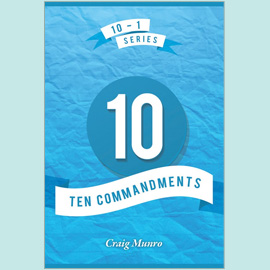Two hundred years ago this month David Livingstone was born in Blantyre, mid-Scotland. Very few people have not heard or read of this great trailblazer into unexplored Africa. Over the past 150 years his story has filled many books, beginning with his own Missionary Travels and Researches in South Africa (John Murray, 1857). Sad to say some recent authors have tried to exaggerate his faults, which doubtless he had. He knew this himself, for he wrote, "God had an only Son, and He was a missionary and a physician. A poor, poor imitation of Him I am or wish to be". But such a man and his service for God in the middle of the 19th century must not be underestimated by God’s people today.
The second eldest son in the family of Neil Livingstone and Agnes (née Hunter), they lived in "a single end" in a tenement in Shuttle Row near a huge cotton mill powered by the waters of the River Clyde. Industrialisation had brought his grandparents from Ulva, an island near Mull. To supplement their father’s meagre income as a travelling tea-salesman his three boys were put to work in the mill. From the age of 10, David had the hazardous task of tying together broken threads under the fast, noisy machinery from 6am to 8pm in temperatures above 90°F. After work it was two more hours at school, learning to read and write.
He became an avid reader – at home until midnight or when his mother took away his book, and at work with a book propped up at the spinning frames. He wanted to learn, and taught himself Latin, then maths and botany. His father, a staunch Calvinist, tried to limit his reading and curiosity into science (which might undermine faith, he feared) and also terrified him lest he were not one of "the Elect" unable to benefit from the "Limited Atonement".
But at the age of 19, a book by Thomas Dick, a nonconformist minister and amateur astronomer, opened his eyes. He found that salvation was available to all who would believe and receive Christ; also that science did not undermine faith but rather confirmed God’s existence and creative power. Livingstone wrote, "I saw the duty and inestimable privilege immediately to accept salvation by Christ. Humbly believing that through sovereign grace and mercy I have been enabled to do so, it is my desire to show my attachment to the cause of Him who died for me by devoting my life to His service". His father also had a change of heart and doctrine at this time, and the family joined an independent church in Hamilton.
At 19 David became a qualified cotton spinner. Four years later he had earned enough money to get him into the Andersonian University, Glasgow. He studied mathematics, chemistry, anatomy and surgery.1 He did this because he had read about a need for missionaries to China, especially those who had a medical training. He wrote, "The salvation of men ought to be the chief desire and aim of every Christian". He also studied Greek and theology under Ralph Wardlaw, an anti-slavery campaigner. Outwith university terms he continued at the mill to finance his studies.
But how was it that a poor lad from industrial Lanarkshire went to Africa, moved by its great challenge? He would open up the "Dark Continent", making three epic journeys of thousands of miles exploring totally unknown regions, in his own hand drawing their maps. He would bring home appalling tales of the ignominious slave trade, aiding its abolition, and most important of all, he would bring the gospel of Christ to thousands who had never heard it.
During his second year at university he applied to the London Missionary Society (LMS) and in 1838 began further studies in theology at Chipping Ongar in Essex. But then the infamous "Opium Wars" with China had begun so the LMS directed him towards the West Indies. Early in 1840 he listened to a Scotsman called Robert Moffat, just home from Africa, telling of "the smoke of a thousand villages where no missionary has ever been". His heart was stirred, and with this new focus he sought more medical and surgical experience in London, collected his degree from Glasgow in November, then on 8 December set sail from Southampton on The George, three months later landing at Port Elizabeth.
His first journey took over six weeks by oxcart for the 600 miles to Kuruman where Moffat had settled; later 350 miles farther north to Kolobeng. In 1845 he married Mary Moffat. Here in a corner of rural Botswana can still be seen the site of their first house, and his dentist’s chair - a great stone at the door! - also a little graveyard where his 2-week old daughter Elizabeth is buried beside two other explorers. It is an evocative place, the thorn bushes and thickets still difficult to penetrate, little changed since he was there.
Mary Livingstone is largely forgotten. She had perilous pregnancies (and one miscarriage) due to the long arduous journeys they undertook. In 1852 she returned to Britain with their three surviving children. She was very poorly provided for and in desperation her faith seems to have wavered. In 1856 Livingstone returned to Britain to write and lecture and gain huge popularity. In 1858 she returned to Africa with him and bore him another daughter.2 During a journey to the Zambezi in 1862 she died of fever and is buried at Chupanga. He visited Britain again in 1864 and returned to Africa in 1866 via Bombay.
Livingstone’s travels, determined ambitions, graphic accounts of slavery, and his subsequent fame can be read about elsewhere.3 He said, "I will go anywhere - provided it be forward". One of his elusive objectives was to find the source of the river Nile. He would be the first white man to see ("discover" is not the right word) the mighty falls on the Zambezi, locally called "the smoke that thunders", renamed the Victoria Falls in honour of his Queen. The story of how he was "lost" for months and "discovered" by Stanley in 1871 is well known. Less well recognised are his many days of hunger and thirst, of severe and debilitating malaria and fever, encounters with wild men and wild beasts. In 1843 he was mauled by a lion which permanently damaged his arm. At such a time he wrote, "I’d rather be in the heart of Africa in the will of God than on the throne of England out of His will".
His converts were few, perhaps because he stayed so briefly in one place. He often preached with few visible results. Sechele, a Kwena chief, was converted and was baptised in 1848. But his great legacy is how he influenced others. That goodly heritage has affected mission work to this day especially in southern Africa. He had written, "I will place no value on anything I have - except in relation to the kingdom of Christ". He sowed and many others have entered into his labours.
He started his last journey in August, 1872, but became extremely ill with dysentery. To compound the problem, his medicine chest was gone, taken by a deserter. In January he was being carried across the Benguela swamps by his faithful men, up to their necks in muddy water, often covering only 1½ miles a day. At Chitambo’s village near the River Luapula he could go no farther. They built a hut for him, and on 1st May, 1873 his men found him dead, kneeling by his bed. He had written on his last birthday, "My Jesus, my King, my life, my all, I again dedicate my whole self to Thee. Accept me, and grant, O gracious Father, that ere the year is done I may finish my work".
His heart was buried beneath a tree there at Ilala, and then his embalmed body was carried 1,000 miles to the coast by two devoted men, Chuma and Susi, and shipped from Zanzibar to Southampton to arrive on 15th April, 1874. His body was identified by the mis-shapen arm bone resulting from the lion attack. He was buried with great ceremony in Westminster Abbey beside other great men of the Empire. Along his gravestone in brass letters can still be read John 10.16, the words which had motivated this outstanding life:
"Other sheep I have, which are not of this Fold: Them also I must bring, and they shall hear my Voice".
To be continued.
1 His class certificates can be seen today in the centre bearing his name in his native town. It is well worth a visit. Two quotes sit side by side: "The love of Christ constraineth us"; "The love of Christ compelled me".
2 Their sons were Robert (died 1865 fighting in the American Civil War), Oswell, and Thomas, and his surviving daughters Agnes and Anna Mary.
3 For example, David Livingstone, Missionary and Explorer, J Alfred Sharp, Epworh Press, 1929.









